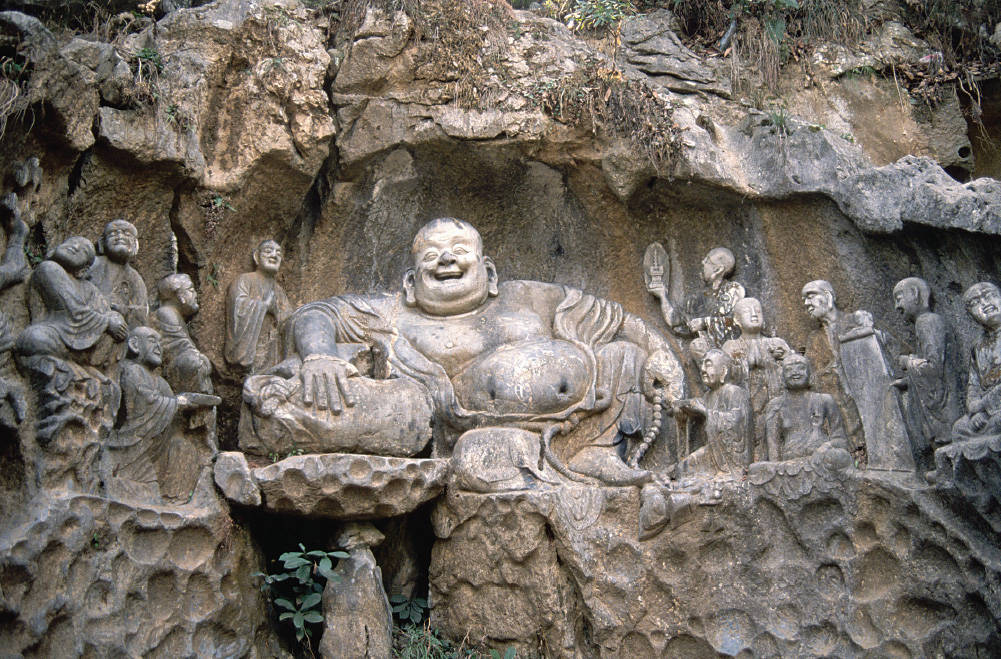Visual Source 4.4
The Chinese Maitreya Buddha
Beyond numerous bodhisattvas, Mahayana Buddhism also populated the spiritual universe with various Buddhas in addition to the historical Buddha. One of these is the Maitreya Buddha or the Buddha of the future, predicted to appear when the teachings of the historical Buddha have been lost or forgotten. In China, this Buddha of the future was sometimes portrayed as the “laughing Buddha,” a fat, smiling, contented figure, said to be modeled on a tenth-century monk named Budai, who wandered the country merrily spreading happiness and good cheer, while evoking contentment and abundance. Visual Source 4.4 illustrates this Chinese Maitreya Buddha together with some of his disciples in a carving, dating to the tenth through fourteenth centuries, in China’s Feilai Feng caves.

Question
How does this Buddha image differ, both physically and in its religious implications, from the other Buddhas already discussed in this feature?
Question
Why might this image be appealing to some Buddhists, and why might others take exception to it?
Question
In what ways does this figure represent an adaptation of Buddhist imagery to Chinese culture? Consider what you know about Confucian and Daoist postures to the world.